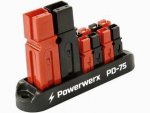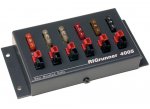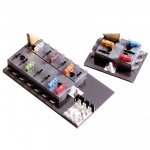mmckenna
I ♥ Ø
Motorola shops will be a good option. Just be careful, anything with that brand name on it will be expensive. But a decent radio shop can handle what you need and they should do a good job, if you are willing to pay for it. Law enforcement/public safety agencies understand the need for good installs, and will have a shop they use. Follow that path and you'll find what you need.
As for the install business...
Hams are traditionally a cheap bunch. If you look at many ham installs, you'll see bungee cords, velcro, double sided tape. You'll see cigarette lighter plugs and mag mount antennas.
A lot of hams are completely happy with halfway installs like that, and don't want to change. Too many are downright afraid to do a proper install, drill holes for mounting, do permanent antenna installs. And they often won't ask for help outright. Some will, but it's rare around these parts.
Maybe with a good shop nearby, you'd get some interested in doing it right.
But it's hard work. Spending all that time under the dashboard is young persons work. I still do it occasionally, but I'm sore for a few days afterwards.
Commercial installs would probably be a better focus for a shop. At least you'd get people that would be willing to pay to do the install correctly. Some truckers are willing to pay to do things right. If you get into the off road crowd, you may also find a market for better installs. They'll at least admit what they don't know and will be more likely to pay for help.
But, you'll be happy with a good install. I've always done my own and never regretted doing it right. I've had to fix a lot of work that professional shops have done on our police cars at work.
Whatever you do, avoid the stereo/alarm shops. Most of them don't understand two way radio and do pretty sloppy work.








